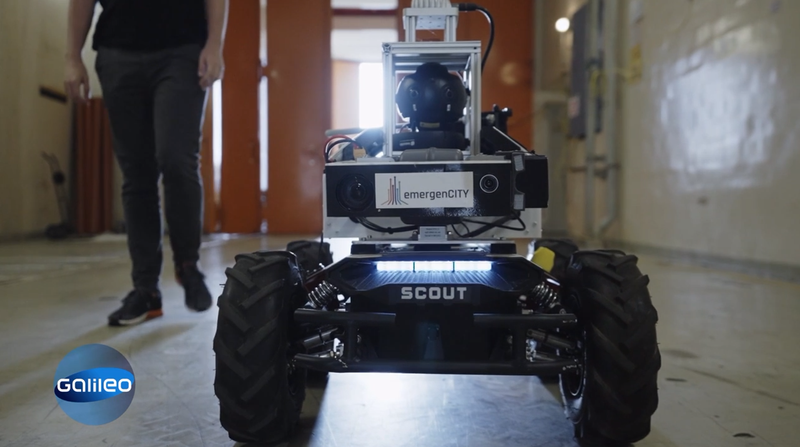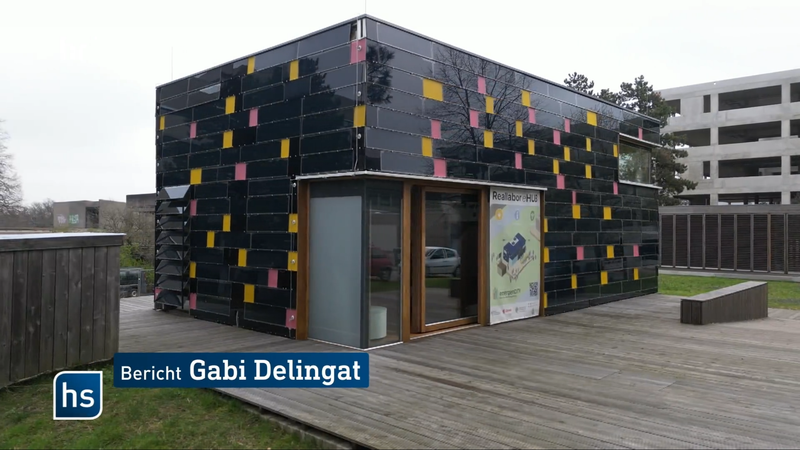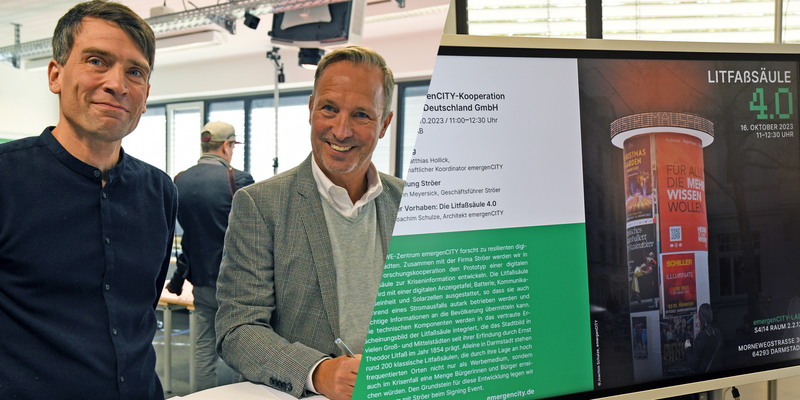How does the dismantling of nuclear power plants actually work and what do you have to watch out for? Galileo investigates this question using the example of the Greifswald nuclear power plant, which is currently being dismantled. Because radiation exposure continues to be under sensitive observation even after the fuel rods have been removed, it can be helpful to use robotic systems in the dismantling process.
From minute 04:40 of the TV report, Galileo visits the robotics team of TU Darmstadt and the two rescue robots DRZ Tim and emergenCITY Scout at the European Robotics Hackathon. This competition, where international research teams can test the current state of development of their robotic systems, takes place at the Zwentendorf nuclear power plant in Austria. The plant was completed but never put into operation because of a referendum that voted against its commissioning. Now it serves as a research center and training ground for safety training.
Kevin Daun, doctoral student at TU Darmstadt in the Department of Simulation, System Optimization and Robotics, explains in the article why he and the nine-member team are committed to developing the two robots: “Our goal is to develop robotic systems that make life easier, safer and more efficient for people. In doing so, we want to relieve people who take on dangerous tasks from danger.”
With the help of sensors, the robots Scout and Tim can, for example, create a radiation map, use a camera to provide information on injured people, or find hidden sources of radiation and close valves. The rough terrain of a nuclear power plant, with its thick concrete walls and steel doors, presents challenges that require Tim’s tracked undercarriage and Scout’s stable radio communications.
For four years, the research team has already been working on the development, together with emergenCITY and the German Rescue Robotics Center, and were not only able to successfully master the mission in the TV report. The two robots could already convince several times at competitions in the past years: The team won this year’s RoboCup Rescue German Open competition and convinced several times at the RoboCup World Championships. At the robotics competition at the nuclear power plant in Zwetendorf, the team delivered the “Best Autonomous Radiation Mapping”.
The entire article is available for viewing in the Galileo media library. Reports on this year’s EnRicH - European Robotics Hackathon and the RoboCup World Championship are available on the emergenCITY website.



